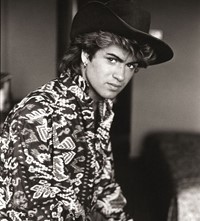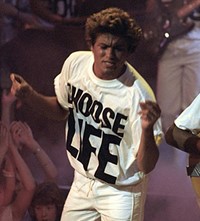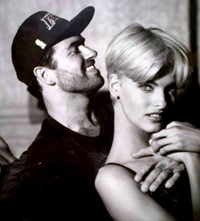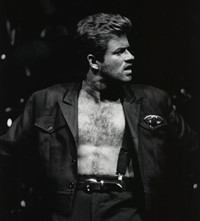As the one-year anniversary of his death approaches, we chart the music icon’s sartorial journey and ongoing influence on the world of fashion
In June 1982, George Michael and Andrew Ridgely emerged – or rather, burst – on to the pop-music landscape with the eponymously-named Wham! Rap. Part parody, part social commentary, the track did little to hint at George’s incredible talent for songwriting (wham, bam, I am a man…), but did demonstrate his tongue-in-cheek approach, his sense of humour and his propensity for the leather biker jacket and stonewashed denim jeans that would become his signature.
Though Wham! Rap flopped miserably upon its initial release, its re-issue in early 1983 propelled George and Andrew into the hearts of teenage girls everywhere, and saw their faces ripped from copies of Smash Hits and plastered across bedroom walls up and down the country.
Despite his young fan base, George, who identified privately as bisexual at this point, didn’t shy away from sex and sexuality, with the duo’s high-camp videos, suggestive lyrics and OTT clothing – shorter-than-short shorts, cropped t-shirts and neon-bright string vests amongst their choices – offering a certain ambiguity. Were they appealing to the girls or the boys, or both? Wham! weren’t wholly letting on.
In the 1984 video for Wake Me Up Before You Go-Go came what was perhaps the most (stylistically) memorable moment of the band’s career. Wearing rolled-up white jeans and oversized t-shirts emblazoned with Katherine Hamnett’s anti-drugs, anti-nuclear war ‘CHOOSE LIFE’ motto, the start of George’s journey towards the title of ‘style icon’ was clearly marked.
Soon after, Wham! went their separate ways and, along with bandmate Andrew, gone were the OTT ensembles of previous years. Instead, George sought to establish himself as a serious artist, adopting a uniform of tight t-shirts, stonewashed denim and oversized leather jackets in a predominantly monochrome palette, his trademark gold crucifix dangling from his ear. This rock and roll-inspired look saw George reinvented as something of a bad boy, a notion that was reinforced by hits including Faith and the controversial I Want Your Sex.
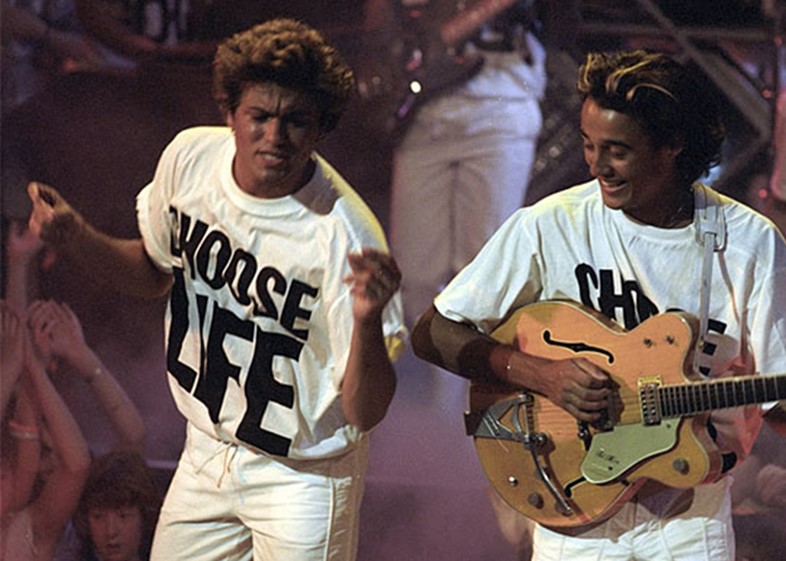
George was fast becoming a global star, but his resolutely private nature saw him grow tired of the pressures of fame and he took a break from the music industry. By 1990, though, he was back – or at least, his voice was. Inspired by Peter Lindbergh’s Vogue cover of the same year, George employed Naomi Campbell, Linda Evangelista, Tatjana Patitz, Christy Turlington and Cindy Crawford to lip-sync the words to Freedom! ’90 while he remained firmly off-screen throughout the video.
The video – and that of Too Funky, which also starred the same gang of supermodels – marked a change in direction for George and both the music and fashion industry as a whole. The glamour and excess of the 1980s that the singer had been part of was making way for the understatement of the 90s – the models wore simple dresses and natural makeup, appearing perfectly imperfect, (minimal) flaws and all. In turn, the era saw George happy to let his talent do the talking, his image taking a backseat to his music – “I don’t find joy in watching myself, whereas, actually, I quite like listening to my own music” the singer said of his decision.
In 1993, unbeknownst to the public, the singer was hit by tragedy when the love of his life, Anselmo Feleppa, died of AIDS. The casual tailored suits he’d adopted and teamed with baseball caps in the early 90s developed to become more formal, taking on an air of melancholy and mourning. Reminiscent of the style of the Japanese designers that infiltrated Paris in the mid-80s – Yohji Yamamoto and Issey Miyake amongst them – collarless jackets and streamlined silhouettes were integral to his look. Particularly notable was the understated mandarin-collared shirt worn in the video for Jesus To a Child (which he penned for Anselmo), its clean lines mirroring the stripped-back sound and the emotions he laid bare on the track.
In 1998, George came out as gay when he was notoriously arrested for engaging in a ‘lewd’ act in a public toilet in Beverly Hills. Instead of being embarrassed or retreating from the music scene as he’s done at various points in his career, George embraced the incident with the self-deprecating humour he’d first shown in the early days of Wham! Releasing single Outside, a tongue-in-cheek but ultimately vehement refusal to be shamed either for the incident or for his sexuality, the video saw him dressed as an L.A. policeman, a camp trope that sat in stark contrast to the low-key jeans, t-shirt and leather jacket that had become his uniform.
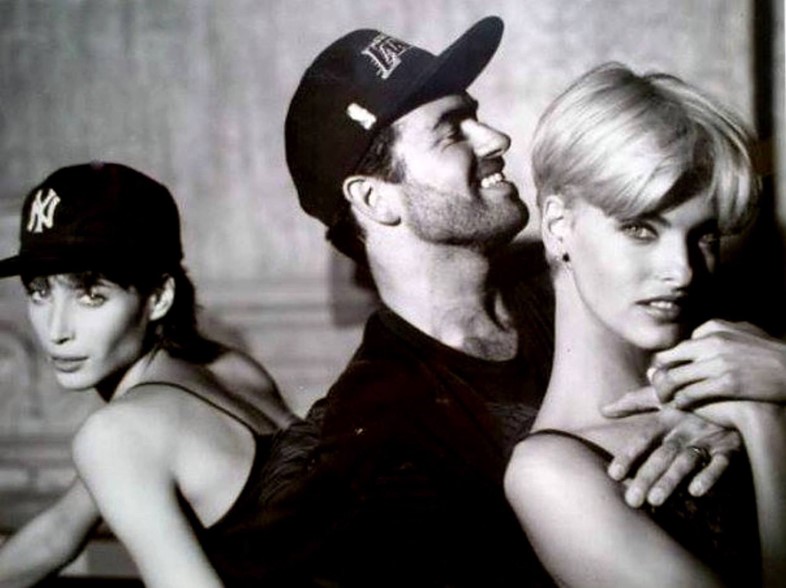
Now, as we approach the first anniversary of his death and reflect on his style, it’s easy to see why George was – and will likely remain – so influential.
With the likes of Blondey McCoy referencing him as part of his recent Thames collection (and, in a very George-move, donating the proceeds to KANANY), and the resurgence in popularity of politically-charged Katherine-Hamnett-inspired t-shirts, though George certainly knew how to dress, his appeal lies more in his didn’t-give-a-fuck attitude and his refusal to conform to what anyone expected of him more than what he actually wore. RIP, George – you are missed.
More from our Style Icon series:
The Enduring Style of John F. Kennedy Jr.
Why Jim Morrison Was the Ultimate Romantic Rebel
The Spectacular Style of Cecil Beaton
Remembering the Amazing Style of River Phoenix
Keith Richards: Rock and Roll’s Ultimate Style Icon
Lead image: Copyright © Michael Putland & Gallery Vassie, Amsterdam. It’s Been a Fantastic Ride... an exhibition of photographs by Michael Putland spanning his incredible 50+ years in the music business is at Gallery Vassie from February 10-April 22, 2018.
